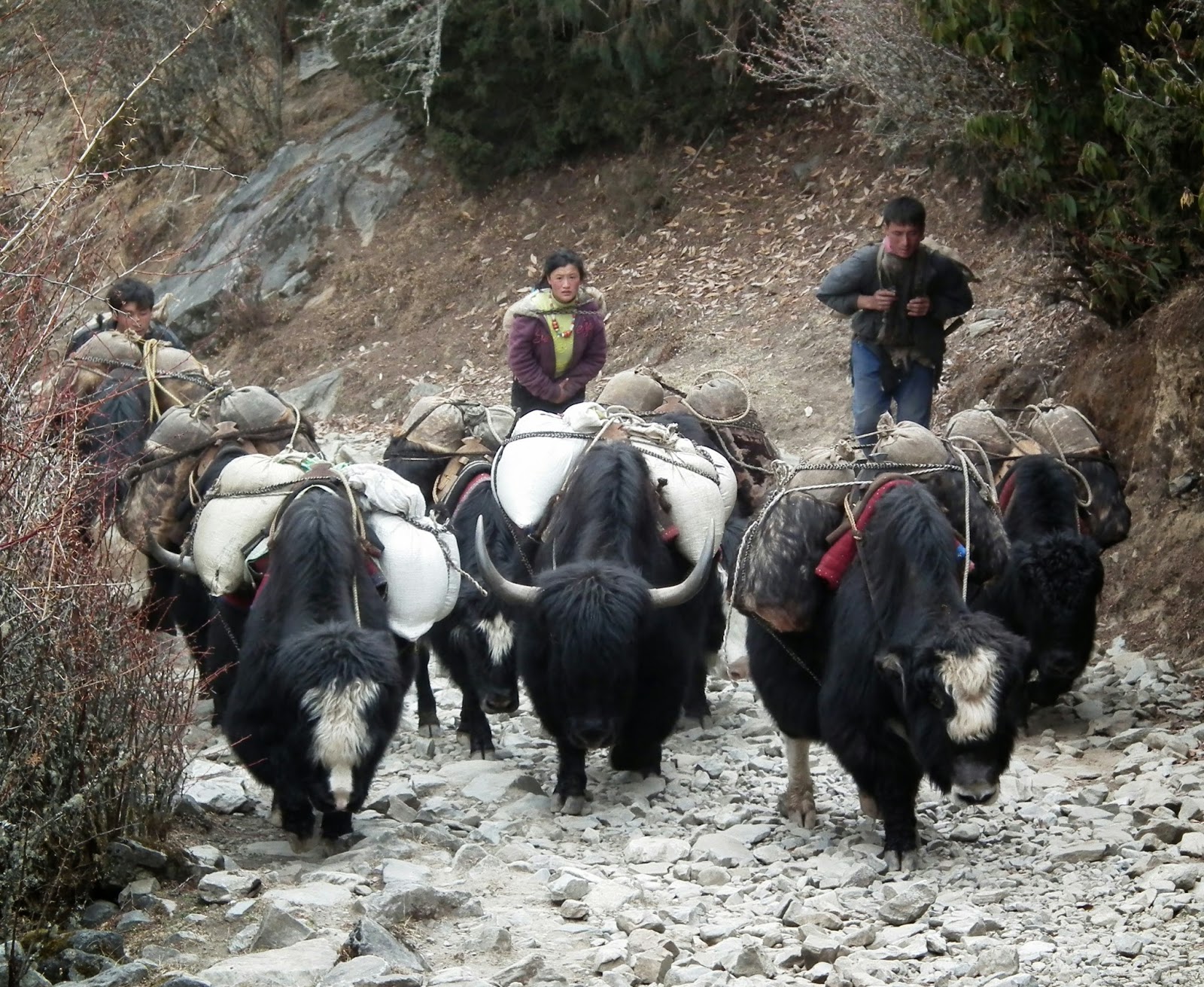| Nakchungla pass |
“LA THONG SA GANG GE CHI THO KHA,
GANG KEAI PAY KHAWA CHAG NU LU…..” Regardless of it being one of the popular
songs of nineties. It sounded not more than like a howling of the solitary
jackal under a bright full moon struggling to find a mate while we sang on the peak
of Nakchungla. With up climb of every foot step, pace of my heartbeat increased
proportionately making me difficult to breath.
Seeing for the first time, the
beauty of Himalayan scree is indescribable with my limited vocabulary. Huge boulders stacked over each other,
enriched with crimson blooming drenched by fleck of snow harbored beneath
respectfully bowing Rhododendron trees, depict the impressive atmosphere of
Nakchungla pass located at 4100 m altitude.
| Merak village |
| Blooming of Rhododendron |
 |
| Signage |
 |
| Culture |
Located at 3500 m altitude,
winter season is very harsh with blanket of snow cover for most of the times
with difficulty to travel and survive because of cold. Livestock migration
towards lower altitude before the onset of the winter season is unavoidable due
to extreme weather condition. From the centuries, “Brokpas” indigenous
inhabitants of Merak were nomads and the tradition is still surviving with no
much changes. Their nomadic life style can be attributed to extremely harsh
weather conditions that hardly allow any agriculture crops to survive.
 |
| Jomo Kungkhor |
For the first time visitor before
crossing any passes of the peak on the way to the village, every visitor has to
sing at least a song, so as to honor and please Ama Jomo. This tradition has
been in practice since a time of their forefathers and believe to bring
misfortune to the locality incase the new visitor enter without singing. Maintaining hygiene could be
one of the issues when it comes to nomadic life style but Brokpas really
concerns about the cleanliness of their hearth since it is believed to bring
misfortune on dirtying of it.
Practice of polyandry in terms of
marriage is not uncommon in order to meet the demand of manpower to lead the
nomadic lifestyle. “Bropka Yoeshay” a fermented cheese those are stored in an
air tight leather pouch for several months are well know cheese across the nation
and considered as the delicacy of the Brokpas.
On visiting the temple and
monasteries along the villages, one will sight at least a portrait of H.H. Dalia
Lama inside it unlike monasteries around other parts of the nation. It symbolizes
the practice of Gyelokpa a branch of the Buddhism that is strongly practiced in
Tibet. Culture and tradition is a sort of an identity chain that links us to
our forefathers who have inherited from their ancestors. It is certain that
culture and a tradition are being developed with convenience to the locality
and it differs from one locality to another and they owe to be respected. So do
here in Brokpas community instead of burning/cremation, they tend to slice body
of death ones and throw in the river which sound little bit uneasy for the
first time visitor.
 |
| Mode of transportation |
Approximately, more than 3 hours
uphill climb from Merak and six to seven hours from Sakteng, Nakchung-la is unavoidable and one of the
highest passes between the two settlements. Coated with snow and fueled by unpleasantly cold gusty atmosphere, the peak
is renowned for its difficulty in crossing both by travelers and animal/pony without
getting totally exhausted. According to
the oral history, people of Sakteng and Merak are said to be originated from
the subordinates/ followers of Ama Jomo partitioned by Nakchung-la on their
journey towards Merak. It’s believed that she was accompanied by a group of
people on her way from Tibet in search of beautiful and peaceful place to
reside. A huge group was known to consist of mixture of wealthy, healthy, poor
and a weak people and livestock. When the expedition team reached to place
called Lhondrojong (direct translation : returning place) which is located few hours down the base of
the peak of Nakchungla towards Sakteng, Amo Jomo envisioned that weak people
won’t be able to cross it. Relating to those incidents at present; inhabitants
of Sakteng are considered as little poor, weak and naïve comparative to Merak since
they are believed to be the descendents of those weak and poor people of Ama
Jomo’s expedition team returned from Lhondrojong and settled at Sakteng. But
it’s all on account of oral history, which requires further validation. Both culturally and
traditionally, native inhabitants of Merak and Sakteng are identical apart from
insignificant difference in their accent of speaking.
| Walking over a melting snow |
On progressive climbing of
Nakchungla from its base, with every footstep, I could see the fading bird’s
eye view of clustered settlement of Merak. With fading view my breathing
shortened proportionately followed by bit of giddiness. By then, we were on the mid of the peak from
where it was vividly visible with a snow sparking over it. Zeal to climb didn’t
subside in me and continued our journey over melting snow with sweets in my
mouth to avoid catching from altitude sickness.
At last, after more than three
hours constant uphill walking through woodland, scorching sun and a melting
snow, we could reach Nachungla pass whereby we sang a song to keep their
tradition alive with our precious and limited energy left in us. Though fully
exhausted, I could feel and notice the sense of satisfaction and joy among our
team while enjoying the fresh air of Nakchungla.